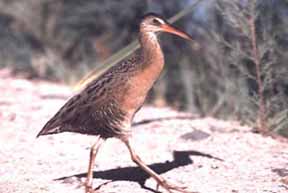Project Description
The Ciénega de Santa Clara is the largest marsh wetland in the Sonoran Desert, extending over 5,800 hectares. It supports nearly 75% of the total population of the Yuma Clapper Rail, an endemic marshbird of the Lower Colorado River and its delta that is protected as Endangered in the United States and Threatened in Mexico. The Ciénega de Santa Clara also supports significant numbers of California Black Rail (Endangered in Mexico), Virginia Rail (Under Special Protection in Mexico), American and Least bitterns, as well as hundreds of thousands of shorebirds, ducks, and geese. The purpose of this project is to conduct prescribed burns on some portions of the Ciénega de Santa Clara (approximately 20% of the Ciénega; about 1,100 ha) in order to rejuvenate the emergent vegetation and enhance the habitat for Yuma Clapper Rail, California Black Rail, and other birds. The fires will be conducted in areas that have been identified as showing an increase in cattail density, an accumulation of dead plant material, and a reduction in marshbird densities. These activities will be conducted by a binational team that has been involved with rail conservation along the Lower Colorado River, including the Upper Gulf of California and Colorado River Delta Biosphere Reserve, the Arizona Cooperative Fish and Wildlife Research Unit, the Bureau of Land Management, and Pronatura Noroeste. The team will conduct marshbird surveys, following the Standardized North American Marshbird Monitoring Protocols, prior to the prescribed burns and at least three years after the burns as an assessment tool to evaluate the effectiveness of the project.


 English
English  Español
Español 